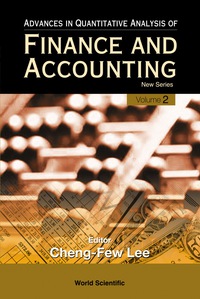



74) Which of the following statements is FALSE? A) Discounted cash flow models focus on future cash inflows and outflows. B) Discounted cash flow models consider the time value of money. C) Discounted cash flow models focus on net income. D) Discounted cash flow models compare cash outflows today to the present value of future cash flows. 75) Steps used in applying the net present value method to a proposed capital investment do NOT include A) identify the amount and timing of relevant expected cash inflows and outflows B) find the present value of each expected future cash inflow and outflow C) find the sum of the present values of each expected future cash inflow and outflow D) find the future value of the cash outflow that occurs at the present time. 76) Which of the following statements is FALSE? A) The higher the minimum desired rate of return, the lower the present value of each future cash flow. B) Higher required rates of return lead to lower net present values for capital investments. C) Higher required rates of return lead to higher net present values for capital investments. D) The net present value for a project can be negative or positive depending on the minimum desired rate of return used 77) When using the Net Present Value model, which of the following assumptions is/are used? A) We assume the predicted cash inflows and outflows are certain to occur at the times specified. B) We assume perfect capital markets. C) The Net Present Value model meets the cost-benefit criterion. D) A and B 78) A capital investment has a net present value of $1,000.00 at a required rate of return of 10%. At a 12% required rate of return, the net present value of the investment is $100.00. At a 14% required rate of return, the net present value of the investment is $0. The capital investment should be rejected if A) the required rate of return exceeds 14% B) the required rate of return exceeds 12% C) the required rate of return is less than 14% D) the required rate of return is less than 12% 49) To determine the cost of a main product with by-products, we take the cost of the main product and A) add separable costs of the by-products and add revenues from the by-products B) add separable costs of the by-products and subtract revenues from the by-products C) subtract separable costs of the by-products and add revenues from the by-products D) subtract separable costs of the by-products and subtract revenues from the by-products 50) By-products differ from joint products because by-products have A) no joint costs before the split-off point B) joint costs before the split-off point C) significant sales value when compared to other products at the split-off point D) insignificant sales value when compared to other products at the split-off point 51) Companies routinely allocate joint product costs to products for purposes of A) inventory valuation only B) income determination only C) decision-making such as further processing of joint products D) inventory valuation and income determination 52) Joint costs of producing multiple products are allocated to A) main products only B) by-products only C) main products and by-products D) service departments 53) Two conventional ways of allocating joint costs to products are A) physical units and incremental revenues B) physical units and incremental expenses C) separable costs and relative sales values D) physical units and relative sales values 54) Corless Company processes copper ore into two products, C and U. The ore costs $5 per pound and conversion costs are $15 per pound. Corless Company plans to produce 40,000 pounds of Product Cand 20,000 pounds of Product U from 60,000 pounds of ore. Product C sells for $30 per pound and Product U sells for $40 per pound. Assume the company uses the physical-units method of allocating joint costs. What amount of joint costs is allocated to Product C? A) SO B) $200,000 C) $600,000 D) $800,000 55) Designer Company processes copper ore into two products, C and U. The ore costs $5 per pound and conversion costs are $15 per pound. Designer Company plans to produce 40,000 pounds of Product Cand 20,000 pounds of Product from 60,000 pounds of ore. Product C sells for $30 per pound and Product U sells for $40 per pound. Assume the company uses the physical-units method of allocating joint costs. What amount of joint costs is allocated to Product U? A) $0 B) $100,000 C) $300,000 D) $400,000 56) Goyette Company processes copper ore into two products, C and U. The ore costs $5 per pound and conversion costs are $15 per pound. Goyette Company plans to produce 40,000 pounds of Product Cand 20,000 pounds of Product U from 60,000 pounds of ore. Product C sells for $30 per pound and Product U sells for $40 per pound. Assume the company uses the relative-sales-value method of allocating joint costs. What amount of joint costs is allocated to Product C? A) $400,000 B) S514,286 C) $720,000 D) $800,000 57) Santelle Company processes copper ore into two products, C and U. The ore costs $5 per pound and conversion costs are $15 per pound Santelle Company plans to produce 40,000 pounds of Product Cand 20,000 pounds of Product U from 60,000 pounds of ore. Product C sells for $30 per pound and Product U sells for $40 per pound. Assume the company uses the relative-sales-value method of allocating joint costs. What amount of joint costs is allocated to Product U? A) $0 B) $400,000 C) $480,000 D) $685,714










